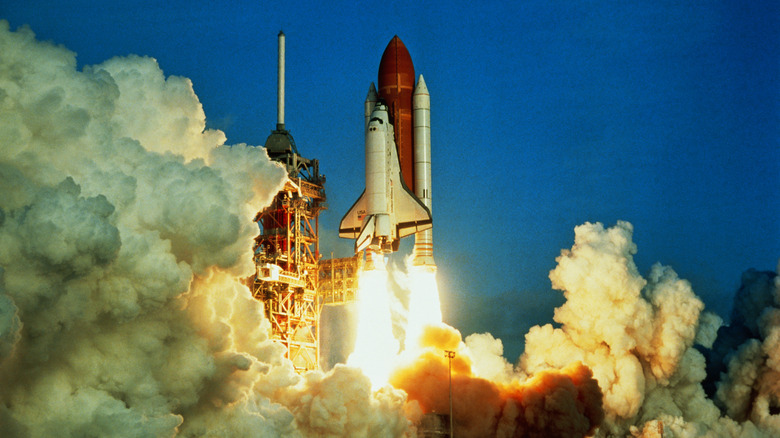NASA Confirms Discovery Of Underwater Artifacts From The Challenger Disaster
This week, NASA confirmed a documentary film crew had located pieces of the space shuttle Challenger wreckage in the ocean off the coast of Florida. This is an important discovery and will give NASA the opportunity to further honor the lives of the astronauts lost in this disaster in 1986. Commanded by Francis R. "Dick" Scobee and piloted by Michael J. Smith, the team was rounded out by Christa McAuliffe, Ellison Onizuka, Ronald McNair, Judith Resnik, and Gregory Jarvis, according to Biography.
The flight erupted just after takeoff as a result of a failed O-ring on the aircraft, according to Space. The aircraft was moved out to the launch pad the day before it was due for lunch, and a cold snap overnight created a structural weakness in this critical component that failed, dooming the astronauts on board and the mission as a whole. But with this new discovery, NASA has been given an opportunity to recover a part of history.
A documentary film crew located the remains off of Florida's east coast
The Challenger space shuttle mission failed after just 73 seconds from the time it lifted off from the launch pad at Cape Canaveral (via History). The shuttle exploded inflight and scattered a massive field of debris as a result. Seven brave astronauts died in this disaster, and the mission failure played a role in shelving the space shuttle program more generally (via Astronomy).
Almost 40 years after this disaster occurred over Florida's Atlantic coast, a documentary film crew searching for aircraft from the time of World War II came across a human-made artifact on the sea floor that looked out of place in relation to their target; NASA reports that these documentarians found the 8-inch square tiles that form an iconic part of the space shuttle re-entry armor. The structures located by the documentarians were partially buried in the sand, but it was clear that what they had found was far less aged than the roughly 80-year-old aircraft carapaces that they were seeking.
The team eventually contacted NASA with their footage and NASA researchers confirmed that what they were seeing was in fact a part of the Challenger wreckage.
The question now turns to recovering and honoring these brave explorers
Now that pieces of the Challenger have been identified and located, the question turns to what to do with this information. NASA's current Administrator, Bill Nelson was a longtime Senator representing Florida and prior to his life as a politician, served as an Army captain and later an astronaut himself (spending six days in space aboard the Columbia space shuttle in mid-January 1986, on the mission directly preceding the Challenger loss), according to Astronautix. Nelson and his team will surely be looking to honor the sacrifice and bravery of their colleagues that were lost on this day in January 1986.
It's likely that NASA will be looking into options for expanding the search area on the ocean floor. The administration will also likely be jumping out of their shoes for the opportunity to recover this piece of American history and properly commemorate the fallen. NASA's Kennedy Space Center in Cape Canaveral, Florida already makes use of many former spacecraft that the United States has sent into orbit and beyond (via Kennedy Space Center). The facility is a living, breathing dedication to the hard work and commitment of astronauts and NASA scientists from the first pioneers all the way through to the present. Artifacts from the challenger mission will surely factor into NASA's continuing plans for building commemorative features in and around Cape Canaveral and the Kennedy Space Center.


